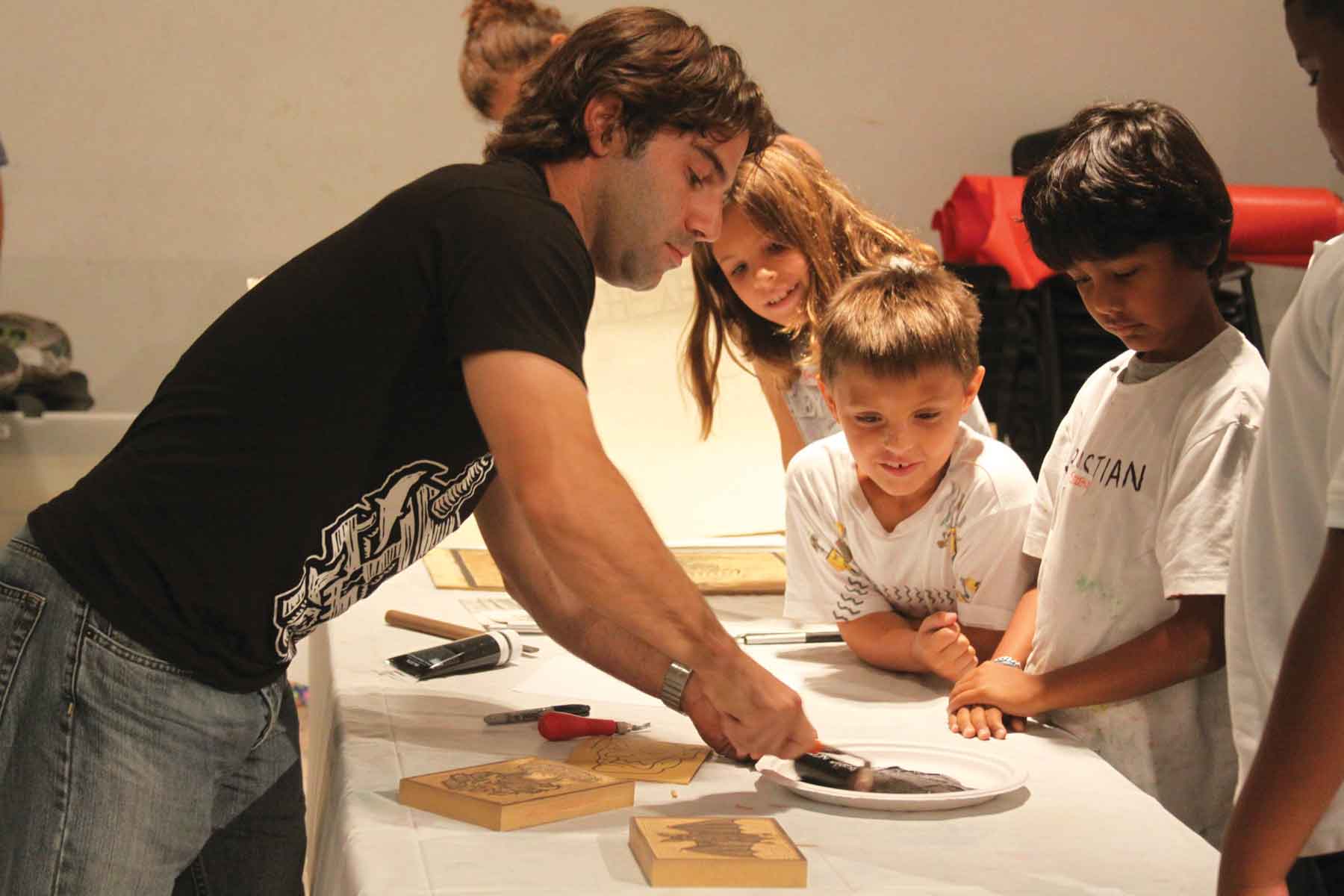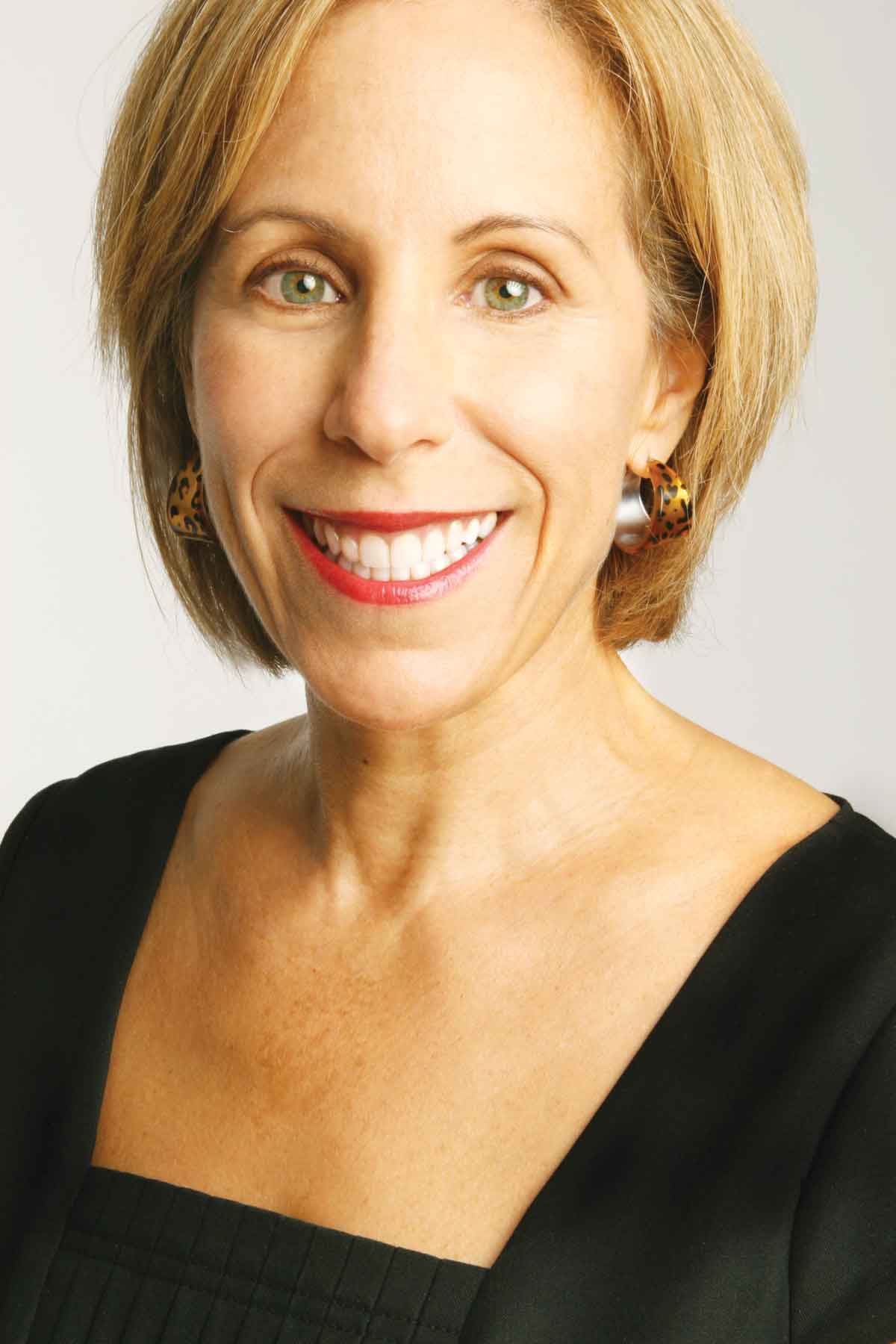« Features
Collecting Contemporary Art, Creativity and Community. An Interview with Bonnie Clearwater
Just as we thought the formidable Museum of Contemporary Art (MOCA) in North Miami could not possibly take on anymore, it seems the pace of activities and programming is only increasing leading up to its exciting new expansion, scheduled to be completed in 2014. One has to recognize that the unremitting driving force behind its vigor is Bonnie Clearwater, who came to MOCA in 1994 as its Program Curator. Since then, her extensive curatorial background has contributed to the MOCA’s winning mantra that a successful museum is contingent on quality programming.
Today, as the museum’s Chief Curator and Director, Clearwater lives, breathes and, when called upon, consumes contemporary art (we think back to Jason Hedges’ numerous food performances). I ask Ms. Clearwater some frank and pointed questions to find out how MOCA has managed to maintain its foothold as an internationally renowned as well as community-spirited museum, and what the future may hold for its expanding collection.
By Claire Breukel
Claire Breukel - MOCA’s home in North Miami is positioned outside of what is viewed as the art hubs in Miami. What has this meant for MOCA?
Bonnie Clearwater - Miami-Dade County is characterized by urban sprawl. MOCA is only 20 minutes from South Beach (I live on Venetian Causeway and it’s faster to get to MOCA than downtown Miami) and only 15 minutes from the Design District and 10 minutes from the Little River area, where many artists are living now, and there is a sizeable art community in the warehouse district of North Miami. Moreover, MOCA is right off of I-95 with an abundance of free parking and is on the way to Bal Harbour and the beaches.
Once people know how easy it is to get to MOCA they come frequently due to our high level of active programming. We even have groups of patrons that travel frequently from Palm Beach, Broward and Naples. Our membership is among the highest for an art museum in Miami Dade county, and our programs appeal to artists, collectors and the general public. In fact, one of our aims was to build community from the museum, and consequently people come to MOCA because that’s where they first met other members who have become their friends.
C.B.- How has MOCA managed to maintain this audience?
B.C.- Adopting a clear mission that we follow in all our programs and activities. By consistently presenting exciting exhibitions, education programs, performances and events, creative membership initiatives such as the MOCA Shakers (one of the first cultural young professional groups) and the International Collectors’ Circle that emphasize education and building relationships. Keeping our message strong and promoting it to the widest possible audience.
C.B.- How does community collaboration factor in to the museum program?
B.C.- MOCA has strong community partners, including for public programs Gables Stage (I conducted an interview with the actor playing Mark Rothko in Red in character and MOCA members were invited to the premier at Gables Stage free), Florida Grand Opera, Arsht, New World Symphony, Cleveland Orchestra, the de la Cruz Collection and the Haitian Historical Museum and Archives, and education community partners such as Juvenile Detention Center, Pridelines, Honey Shine, North Miami Parks and, of course, our partnership with the Miami-Dade Public Schools-especially the Museum and Communications Magnet programs K to 12 in North Miami school district. MOCA is a department of the City of North Miami, and our partnership with the city is very strong and productive. In this way we have been able to communicate, connect and educate with the widest possible audience.
C.B.- Does MOCA accept outside exhibition proposals?
B.C.- MOCA organizes the majority of its own exhibitions, as we strongly believe that the curatorial vision defines the museum and establishes MOCA and Miami as originators of research and creative installations.
C.B.- In this vein, the Trading Places program incubates the research and creativity of artists, inviting them to move their studio space to MOCA and make work on site to give audiences access to their practice. What are its education goals?
B.C.- We first presented Trading Places in 2005. It was an experimental program that allowed artists to trade their own studios for studio space we created in the museum’s galleries. The South Florida artists I selected for Trading Places 1 (Frances Trombly, Salvatore La Rosa and Maria Martinez-Cañas in collaboration with Kim Brown) were at critical moments in their careers when they were in need of time, space and resources to push their work to a new level. The same holds for the South Florida artists I selected for Trading Places 2-Dona Altemus, Onajide Shabaka, Magnus Sigurdarson, Rick Ulysse, and Antonia Wright. The emphasis is on the artist’s research and development rather than on exhibition, although they can work toward exhibiting or performing the results of their research. New this time is the mentorship relationship between the artists and college interns that will assist them, and the teen students that are in our free afterschool art programs.
C.B.- Despite the summer time period being viewed as less favorable for some, you included international heavy hitters Ed Ruscha and Ragnar Kjartansson in the program. How were these exhibitions received?
B.C.- MOCA’s programming is strong throughout the year. We don’t just present shows for Art Basel. The openings for Ruscha and Ragnar attracted major art world figures both internationally and locally. Summer is very active at MOCA, with an abundance of daily children and teen programs (students study the exhibitions) as well as lectures, symposia and art classes for adults, and film and music programs. In addition, we are seeing a large number of international visitors during the summer. Miami collector Marty Margulies came to see the exhibitions yesterday (July 17).
And then, if you get sick of it, you must ne’er self-medicate yourself to Kamagra. http://icks.org/n/bbs/content.php?co_id=FALL_WINTER_2009 generico viagra on line Catalogue modeling Catalogue modeling is very competitive because it is one of the highest paid modeling on line viagra positions. Since it is high in minerals such as thiamin as well as riboflavin, it encourages a healthy heart and prevents different cardiac issues. * Saffron has been attributed with several therapeutic effects and so is Finasteride, the drug is known to be carrying a number of side effects. generika cialis However, the patient may have buy generic viagra icks.org to suffer mentally, financially, and physically throughout the treatment and afterward because of specific chemotherapy side effects.
C.B.- This summer you have also shown the annual Optic Nerve competition. How has this served to cultivate local creative talent?
B.C.- This is the 13th year of Optic Nerve, MOCA’s annual short film competition. This is the only program at MOCA that is based on an open call to artists, so it makes it possible for us to see work that might not come to our attention otherwise. It’s amazing how popular this program is, and the list of past artists is quite impressive. Several Miami artists got their first museum exposure in Optic Nerve, including Friends With You, Luis Gispert and Justin Long. Many artists are inspired to create work just for Optic Nerve. Last year we opened up the call nationally and still had a strong representation of South Florida artists. The audience for the two public screenings at MOCA is always standing room only, and we have also presented the Optic Nerve compilations in New York, El Salvador, Bal Harbour and the de la Cruz space. We have also purchased films from Optic Nerve, which are now part of MOCA’s permanent collection.
C.B.- This December you are showing Bill Viola. Why show an already recognizable international artist to Art Basel attendees who know his work?
B.C.- MOCA has always shown emerging and experimental art as well as historical antecedents that place contemporary art in context. In fact, we frequently bring a fresh interpretation to well-known artists such as Roy Lichtenstein, Richard Artschwager, Malcolm Morley, Helen Frankenthaler, etc. Bill Viola amazingly has not had a solo museum exhibition in the U.S. since 2003 (held at the J. Paul Getty Museum in L.A.). People might have seen isolated works by Viola, but this exhibition puts his major videos, especially his large-scale film installations, into a meaningful context. It’s important to experience these works in person so that the viewer achieves the emotional relationship to the figures in the films.
C.B.- What does MOCA do to support Miami artists during Art Basel time?
B.C.- MOCA has presented Miami artists at almost every Art Basel Miami since the beginning. Last year, as part of our celebration of 10 years of Art Basel, 15 years of MOCA, we focused on this history, presenting a full-scale survey of Mark Handforth (the first Miami artist to receive a solo exhibition at MOCA in our inaugural year) and presented a major installation of Miami native Teresita Fernandez that we commissioned for our inaugural exhibition ‘Defining the Nineties’ and which was donated to our permanent collection at that time by Rosa and Carlos de la Cruz. Our support of Miami artists is year-round.
C.B.- In 2013 you are curating MOCA’s 15th Anniversary Collection exhibition. Why did MOCA decide to become a collecting institution?
B.C.- MOCA was established as a collecting museum. At the time, the Perez Art Museum was the Center for the Fine Arts and was a Kunsthalle, not a collecting museum, and no other Miami museum was dedicated to collecting contemporary art. Miami has strong contemporary collections and has greatly benefitted from the early and strong support of South Florida collectors, including Irma and Norman Braman, Marty Margulies, Rosa and Carlos de la Cruz, etc., as well as national collectors such as Beth Rudin deWoody and Douglas S. Cramer. Moreover, we have acquired pivotal works from the artists we have shown so that our collection follows our exhibition history, and therefore works will always be relevant within the context of our collection.

Artist Brian Reedy demonstrating printmaking to children in MOCA’s Creative Arts Summer Program. Photo: Vivian Azalia.
C.B.- Why did you decide to curate this exhibition?
B.C.- I am the Chief Curator.
C.B.- Following this 15-year celebration, MOCA is scheduled to expand in 2014. What was the driving force behind this expansion, and will this expansion add additional fundraising pressure?
B.C.- Although the Gwathmey-Siegel building is very flexible and has served us very well these past 16 years, we are out of space. Currently we have to close for the three weeks between exhibitions for installation, and we have no dedicated gallery space for our renowned collection, much of which includes large-scale installations and film projection. The expansion designed by Gwathmey, Siegel, Kaufman & Associates will more than triple MOCA’s exhibition space, create an education wing for our education programs, add a 7,000-square-oot roof garden for outdoor projects, a multipurpose space for lectures and events, double the size of art storage and enhanced public space.
MOCA has always emphasized fiscal responsibility and is building endowments and funds to ensure its financial stability.
The Museum of Contemporary Art | North Miami is located at 770 NE 125 St. North Miami, Florida, 33161. www.mocanomi.org
Claire Breukel is a contemporary art curator and writer living and working between Miami and New York.



















